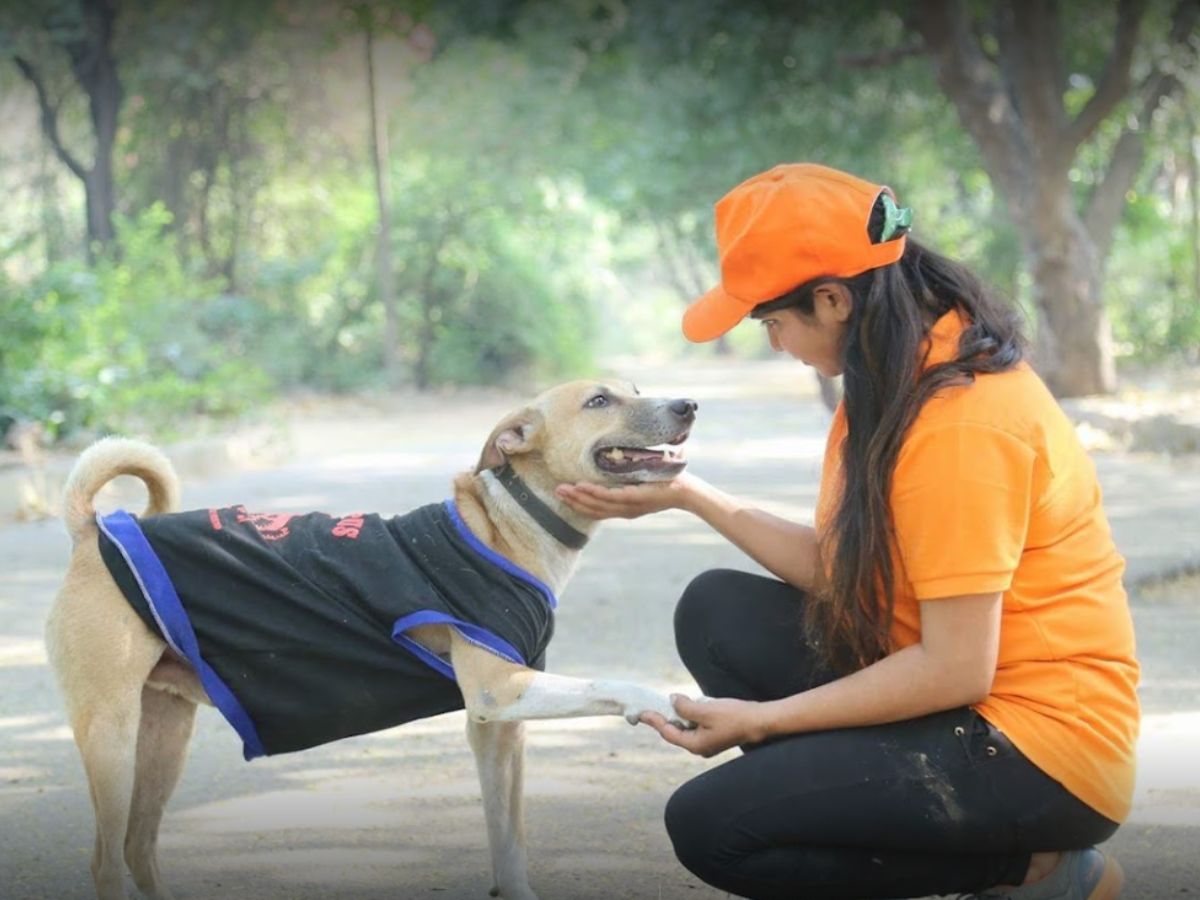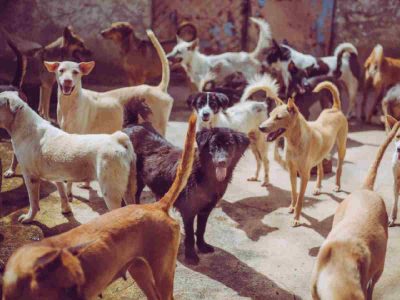In July this year, an 82-year-old woman was mauled to death by her pet dog — a pitbull. The shocking incident reported from Lucknow’s Kaiserbagh locality raised several concerns about domesticated animals. What was even shocking to many was the woman’s son’s decision to retain the pitbull, albeit under some conditions put forth by the Lucknow Municipal Corporation.
“The owner has promised to take the pitbull to a trainer daily and also take him to a behavioural specialist to assess its behaviour. If found violating the conditions, the dog will be seized by the LMC again”, an official statement said.
In 2022, five pitbull attacks were reported, two of them in Delhi-NCR. More than 20 incidents of dogs, irrespective of the breed, attacking their owners have been reported across the nation. And the professionals who have stepped in to nurture these animals are animal behaviourists, who are very different from animal trainers.
Moulding emotions
“Trainers teach animals how to live in a society with humans. Animal behaviourists help the pet owners transform the ‘animal’ to a ‘pet’, solely by analysing and assessing emotions”, says Rebecca Robert, an animal behaviourist from Delhi. She adds that a trainer gives commands, but a behaviourist understands feelings and helps increase the emotional quotient of the pets.
Behaviourists also teach the pets how to coordinate and connect with their surroundings. Ashutosh Kale, an animal behaviourist practising for the last seven years, says, “Animals are fragile, more so when they start living amid humans instead of their own kind. For a dog not living in a domesticated environment, there’s no specific time for a morning walk or for hanging out with other dogs. But when you welcome a pet into your house, you also force them into a new environment that suits your lifestyle. Not many animals will adapt to these changes. They will struggle with it emotionally, and that’s where behaviourists step in”, he says.
Moral education
What differentiates us humans from becoming beasts is our sense of morality, says Robert. “We know hurting others is bad and helping others is good. That’s our moral sense, which several animals often lack – either because of their nature or their emotional stability”, she says.
“You will often see pet owners complaining”, she continues, “that their pet bites other animals or strangers, but not them. Why do you think the pet does that? Because it has the moral sense to differentiate between its owners and strangers.”
However, some animals struggle with using their sense of morality. Zayed Shaikh, another animal behaviourist, says, “For animals that have been deprived of any nurturing environment which restricts them from using their sense of morality, we teach them how to. These animals mostly mirror the human’s actions, which is helpful when correcting their behaviour. For example, we will play with them and tire them out. Then, we will sit with them and ask them if their feet hurt, or if they are tired — just like you would ask a friend or a child. They pick up on these actions of ours and thus, are familiarised with empathy, sensitivity, caring and nurturing.”
Not so social
At the initial stage of coexisting with humans in a new environment, animals have a problem socialising with human beings and other animals. They often feel left out, which aggravates their anxiety, making them do things they normally wouldn’t.
Robert says, “In the old days, we had a gurukul system. Children would sit together, live together, learn from each other and grow together – not only physically, but emotionally as well. When children feel included, they thrive. Same is the case with the animals that are being domesticated. They need to spend time with their kind, feel included. If animals know they have a space where they can be themselves and feel understood, they will thrive too. And this space necessarily need not be among other animals. It can be amid humans too. The only key is inclusion.”

Another problem that bars animals from being social – and thus, friendly, or at the very least cordial with strangers – is confined territories in their ‘master’s home’, says Shaikh. “Animals live in free spaces. Many pet owners keep their pets tied to a pole, or in a room that rarely has huge windows overlooking a green space. Such living conditions lead to territorial aggression in animals, where they want to escape, but also don’t want any other human or animal to enter their ‘territory’. Undoubtedly, the mental state of such an animal is not going to be healthy if the condition doesn’t change”, he says.
The territorial aggression fuels the need of the animal to establish itself as an ‘alpha’. “This need arises out of their need to feel validated and included in their surroundings. They want to be at ease, and aggression, just like for humans, is an easy way to demand this validation. But it isn’t healthy and can be fatal for the animal and the humans around it”, he adds.
Behaviourists help such animals feel included, validated, and acknowledged, says Robert. “Animals that need behaviour modification or rectification come to us, and one of the primary things we do is to make them play with the other animals of their kind. They need to see how they too can thrive in their respective environment, just like the other animals do. We generally get dogs, but other behaviourists help cats, goats, horses and other domestic animals”, she says.
Owners also trained
Robert says that modifying the behaviour of these animals only requires patience, love and lots of pampering. “They are your babies, raise them like one!”, she says. However, she warns that in a bid to make them comfortable, they shouldn’t be pampered so much that they start feeling like the dominant one in the owner-pet relationship.
“All you need to do is help them socialise in different environments, not pamper them so much that they develop a sense of entitlement,” she explains. “Extreme care and extreme lack of care can mess up the dynamics of this relationship. And that is why, when correcting the behaviour of these animals, we also assess the owner’s behaviour and ask them to rectify it, if found necessary.”
Speaking about why he chose to visit a behaviourist for his dog, Naman Ahuja, 28, a resident of Lodhi Colony, says, “When I adopted Moon (a pomeranian), she was only two months old. She was loved by everyone, and hence, was pampered. Perhaps, too much. Within a few months, we started seeing her behaviour lean towards ‘erratic’. She would bark at everyone who came in the house, she would bark at the family members if she didn’t like the food or the environment. She had become very moody. She was also constantly trying to bite the other dogs solely out of jealousy. My mother raised several concerns about Moon’s health and our safety, so I decided to approach a trainer, who failed to control Moon, and then directed me to a behaviourist.”
Pet peeve
Speaking about why he chose to be a full-time animal behaviourist, Shaikh says. “Zuri, my labrador, was the most loving and calm dog I ever came across. One day, a decade ago, when I didn’t give him a meat jerky, he bit me and attacked me.”
The dog only stopped when his dad yelled out his name. “The incident made me question where I am lacking as a pet parent and what’s wrong with Zuri,” he says. “So, I consulted an animal behaviourist. Zuri would spend time with other dogs as a part of her therapy, and me being someone who loves dogs, couldn’t resist asking the behaviourist if I could work with them part-time. They agreed, and I did my apprenticeship for a year, and became a certified animal behaviourist.”
Robert adds that the profession doesn’t require any training or educational qualification. “You just need to have unconditional love for animals. That’s how you can help the pets and their families”, she says.
For more stories that cover the ongoings of Delhi NCR, follow us on:
Instagram: instagram.com/thepatriot_in/
Twitter: twitter.com/Patriot_Delhi
Facebook: facebook.com/Thepatriotnewsindia





